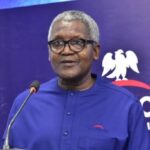Hiddink left PSV in 1990 for Fenerbahce but quit because he was fed up with the directors telling him which players to pick. After three enjoyable years at Valencia, he replaced his friend Dick Advocaat as Netherlands coach. At Euro 96, the Dutch squad simply disintegrated. The split is usually put down to racial tensions. Players from Surinamese backgrounds felt Hiddink was ignoring them, consulting with the white players. Edgar Davids moaned about favouritism and was sent home. But before France 98, Hiddink listened to Davids’ complaints and reinstated him.
After deciding that he had been overstretched at Euro 96, Hiddink brought Frank Rijkaard, Johan Neeskens and Ronald Koemen on to his coaching staff. Davids played brilliantly and behaved impeccably. The Dutch playing 4-4-1-1 with Patrick Kluivert upfront and Dennis Bergkamp just behind, very nearly reached the France 98 final, losing a penalty shootout against Brazil in the semis.
Unimpressed by the way Brazilian full-backs hoofed the ball, Hiddink claimed a moral victory, saying:”Our style, our philosophy has impressed the world, and that’s what I am proud of.”
In 2002 at South Korea, Hiddink inherited a gifted but naive squad chosen by selection committee with any promise held back by a culture that feared failure. Drilled by Hiddink and fitness expert Raymond Verheijen, the South Koreans became stronger, more tenacious and began to take the risks they needed to win.
Hiddink had them in training for a year. Every day he worked with them, making them fitter. They were so fit he decided on a 3-4-3 in which the front three will always press the defenders. In the midfield one defended, one attacked and there are two on the wings. A few decisions went their way and South Korea reached the semis at the 2002 World Cup.
Returning to the club that had given him his big chance, Hiddink chose to play 4-3-3, the classic total football formation perfected by Michels at Ajax, with Mateja Kezman as the main striker. Hiddink got the best out of the Serbian forward, who scored 121 goals in 140 games for PSV before joining Chelsea. And in Philip Cocu, Hiddink had a coach on the pitch. He trusted the midfielder so much that he left him free to change PSV’s formation during games whenever he liked.
Hiddink weeded out a few complacent, defeatist players who he felt had held the club back in Europe. In 2004/05 season, they made a spirited run to the semi-finals of the Champions League, where they lost to AC Milan.
Hiddink moved to Russia in 2006 after he had done a sterling job leading modest Australia to the last 16 of the 2006 World Cup. The Russians have been asking the Dutch to help modernise since the reign of Peter the Great. So at the behest of Roman Abramovich, the Chelsea owner, Hiddink was appointed national team coach. With characteristic audacity, the Dutchman scrapped the 3-5-2 Russia had traditionally played and switched to 4-3-3, harking back to Michels and also Valeriy Lobanovsky – who had coached Dinamo Kyiv and the USSR in the 1970s. Hiddink’s Russia relied on talented full-backs Aleksandr Anyukov and Yuri Zhirkov to supply width in attack. He deployed Roman Pavlyuchenko as a mobile target man and gave Andrei Arshavin licence to be the free-spirited No.10. After losing to Spain in their opening game at Euro 2008, Russia switched to 4-1-3-2, which shielded the defence more effectively. In the quarter-final, against the Netherlands, Hiddink achieved his ambition of becoming ‘traitor of the year’ as Russia tore apart de Oranje, coached by Marco Van Basten.
Hiddink’s brief as stand-in coach at Chelsea last season was simple: Secure a place in the 2009/10 Champions League. Inheriting a team mid-season, he decided that trying to drastically improve player fitness with a new regime was too risky and time consuming. Instead Hiddink sharpened up Chelsea’s training and switched the team pattern to 4-3-3 with Didier Drogba leading the line and Florent Malouda marauding down the left flank. Michael Essien, the closest thing to a total footballer at Chelsea, could play midfield or defence, in the centre, or on the right or left, when Ashley Cole attacked, Essien dropped into the back four. Without taking any new approach or introducing specific fitness training, Hiddink was able to transform Chelsea to the verge of another Champions League final but lost to eventual winners Barcelona.
Finally, Guus Hiddink’s way is this: He assesses the squad’s strengths and weaknesses; uses a system that suits his teams, preferably 4-3-3 or a variation of it, but change when necessary; improves the squad’s fitness with a new or amended training regime; doesn’t tolerate indiscipline and never afraid to stand up to his bosses on technical matters; abhors interference in team selection and encourages his players to be versatile and change positions in a game, which is the philosophy of total foootball.
 Join Daily Trust WhatsApp Community For Quick Access To News and Happenings Around You.
Join Daily Trust WhatsApp Community For Quick Access To News and Happenings Around You.



